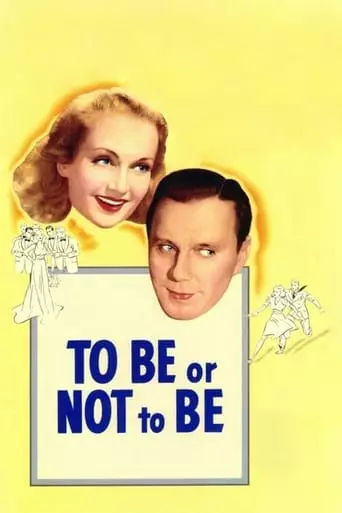
To Be or Not to Be (1942) Watch Online Free
During the Nazi occupation of Poland, an acting troupe becomes embroiled in a Polish soldier’s efforts to track down a German spy.
To Be or Not to Be, directed by Ernst Lubitsch, is a daring blend of comedy and wartime espionage set against the backdrop of Nazi-occupied Warsaw. The film centers on a theatrical couple, Joseph and Maria Tura (played by Jack Benny and Carole Lombard), who lead a Polish acting troupe. Their lives take a dramatic turn when they become entangled in a plot to thwart a Nazi spy, Professor Siletsky, who aims to expose members of the Polish resistance. Utilizing their acting skills, the troupe devises elaborate ruses, including impersonations of Nazi officials, to outwit the enemy and protect their compatriots.
Lubitsch masterfully intertwines elements of farce with the grim realities of war, creating a film that is both entertaining and thought-provoking. The narrative showcases the power of performance and deception, as the actors’ theatrical talents become pivotal in their real-life resistance efforts. The film’s title, referencing Hamlet’s soliloquy, underscores the existential stakes faced by the characters, blending Shakespearean themes with contemporary political satire.
The film explores several profound themes:
Upon its release in 1942, To Be or Not to Be was met with mixed reactions due to its comedic portrayal of Nazis during an ongoing war. Some critics found the film’s tone inappropriate given the global conflict, while others praised its boldness and ingenuity. Over time, the film has been re-evaluated and is now considered a classic, lauded for its sophisticated humor and daring subject matter. Lubitsch’s ability to balance comedy with serious political commentary has influenced numerous filmmakers and solidified the film’s place in cinematic history.
Experiencing To Be or Not to Be is likely to evoke a blend of amusement and reflection. The film’s sharp wit and comedic elements provide entertainment, while its underlying critique of totalitarianism and exploration of the power of art provoke thoughtful consideration. Viewers may find themselves marveling at the courage displayed by the characters and the ingenious use of humor to confront serious issues. The film’s ability to balance levity with gravity leaves a lasting impression, encouraging audiences to reflect on the role of satire in challenging oppression and the enduring impact of artistic expression in times of crisis.
